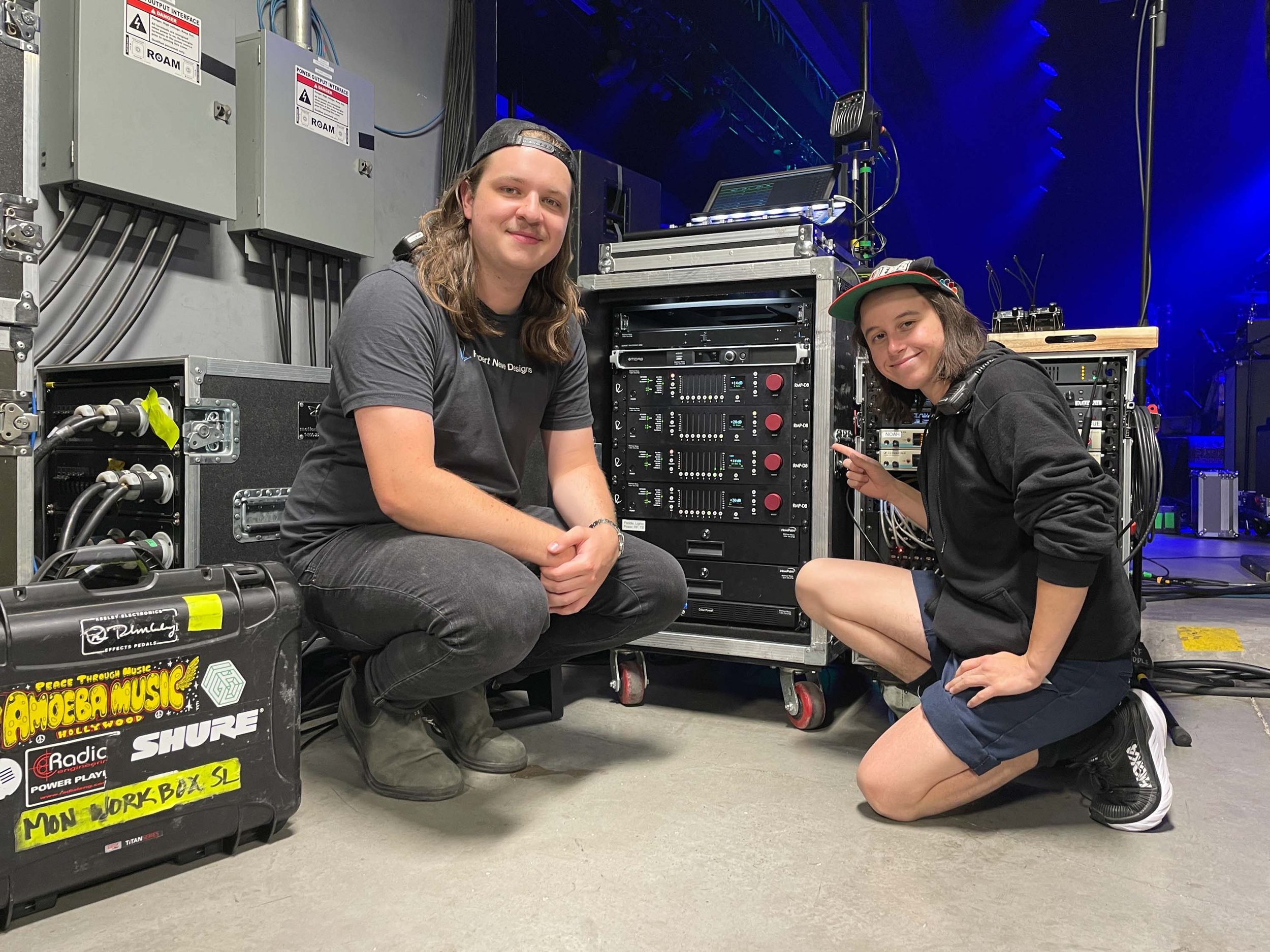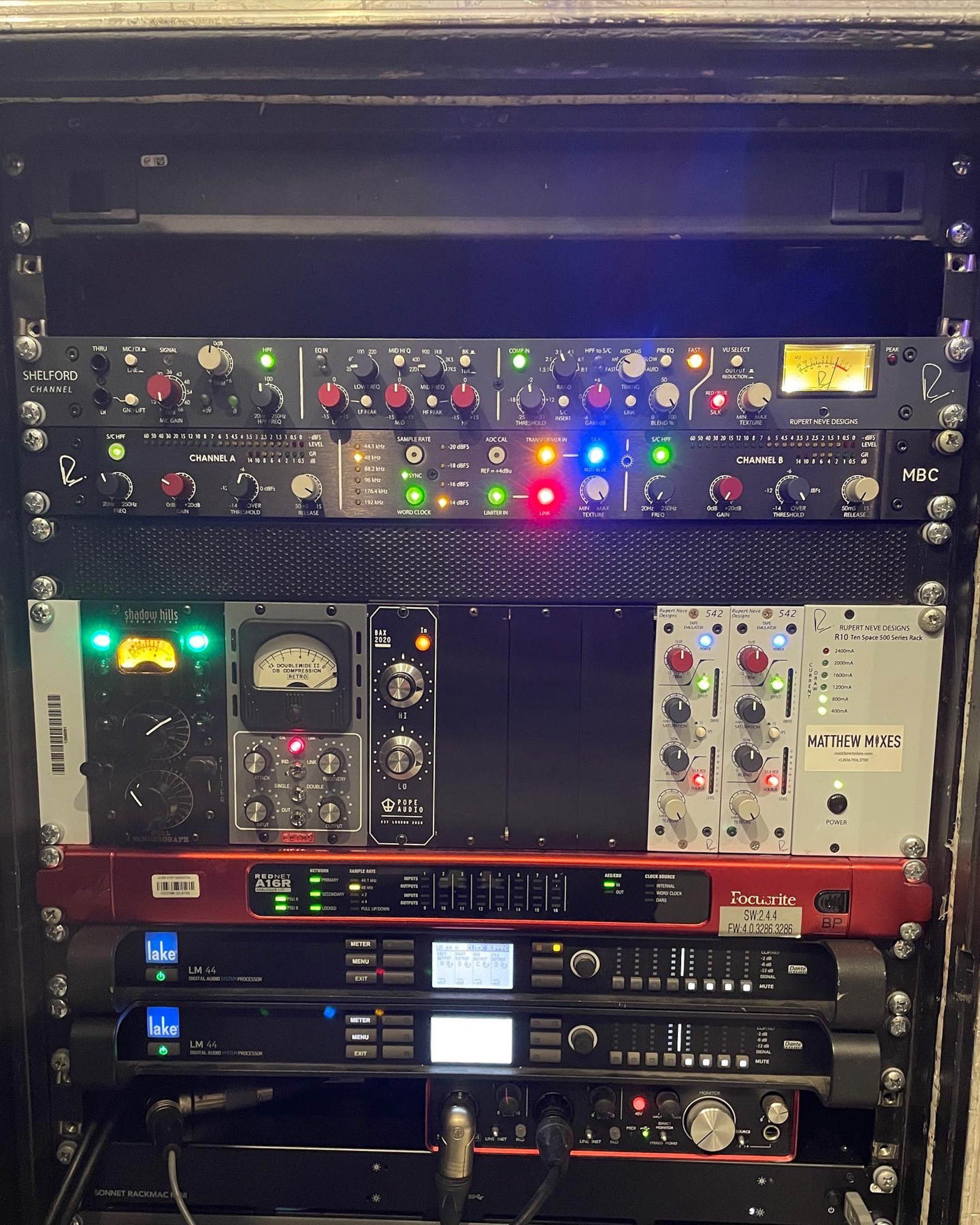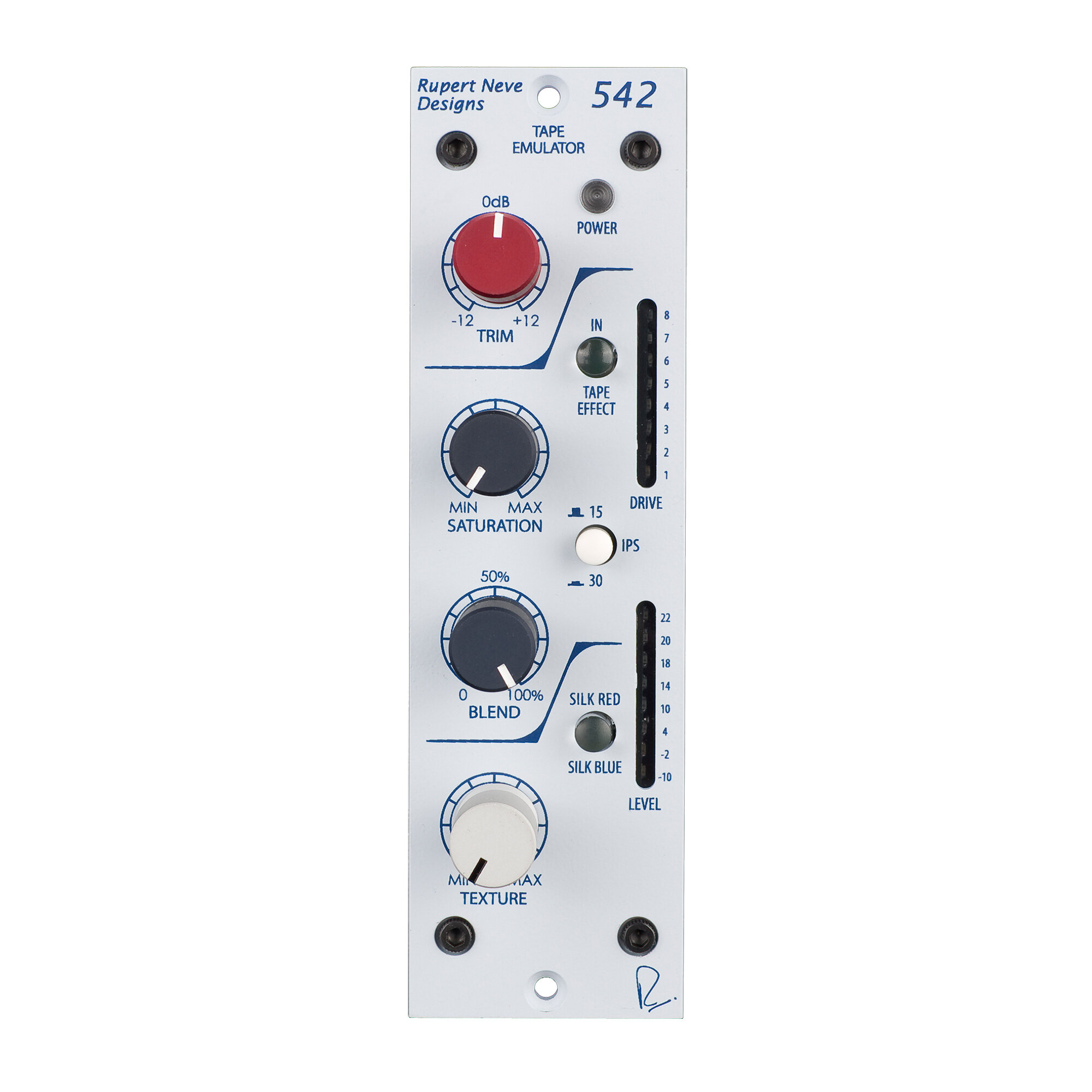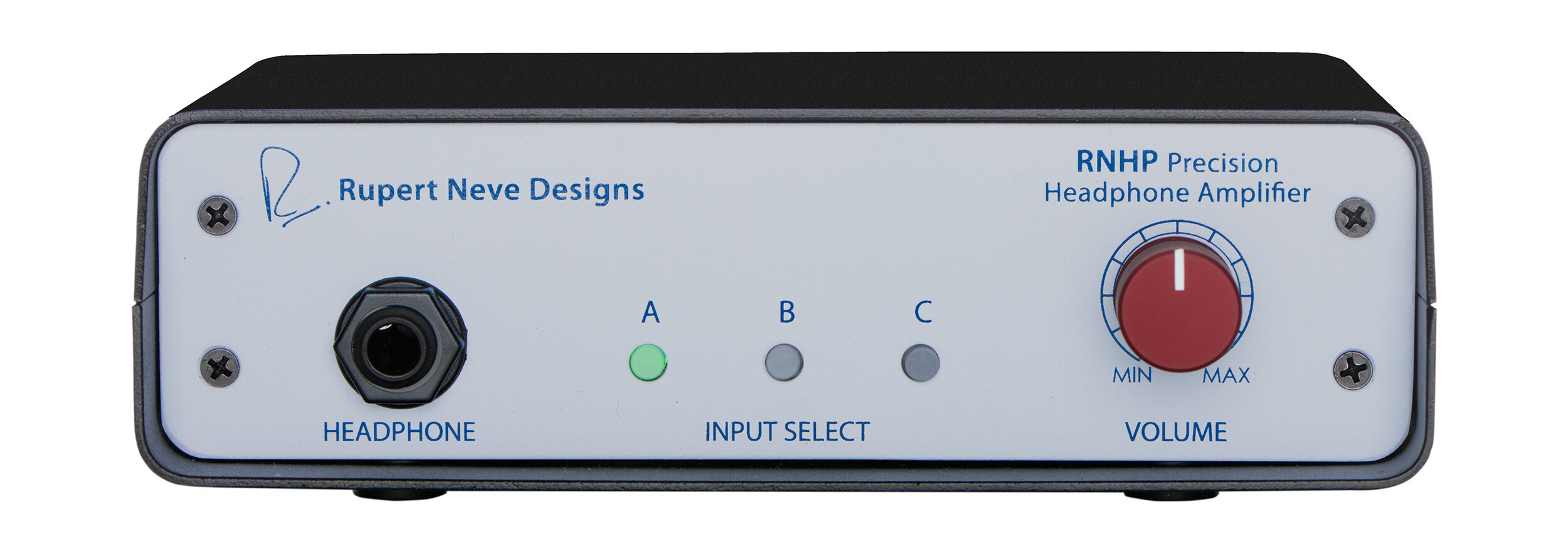Customer Spotlight: FOH/MON Engineer Matthew Walsh
L to R: Matthew Walsh (MON) and Anna Arbolas (FOH) on tour with Julien Baker.
Can you please tell us who you are, a bit about your background, and who you’re currently working with?
I’m Matthew Walsh and I own a small boutique engineering business providing recording/mixing for live and post-production, as well as small format audio control package rentals. About 12 years ago, I started my career in audio in high school mixing theatre and and concerts in Richmond, VA. In 2017, I spent my first year on the road touring and started renting gear out in 2018. I’m currently spending most of my 2024 with The War on Drugs, Alvvays, and DEHD and supporting various other clients with touring packages.
What was the first RND gear you took on the road?
I bought my first two pieces of RND gear, an RNDI and Shelford Channel, for James’ US Tour in 2019. There’s an immediate elevation of quality when you add RND to the signal chain. I’ve always been a proponent of having pieces of equipment that work both live and in studio settings, and, in 2020, I had a lot of time to think about the gear I owned and how it aligned with that frame of mind. The RMP-D8’s were the perfect solution for having studio quality preamps in all scenarios.
How did the overall sound compare to whatever preamps and converters you were using previously?
The RMP-D8’s provide consistency that I wasn’t getting previously. Because they’re studio quality and road ready, I always know I’m going to get incredible inputs no matter what the source or space. They have been the perfect addition to my rental inventory and are easy to ship around the country or the world. Every client that has used them for a tour or recording has texted or called me to exclaim how much of a sonic upgrade they’ve been and how easy they were to integrate.
I had prior experience with Neve clones and vintage preamps, and the RMP-D8’s deliver the same sonic character as the originals with so much more flexibility on the other end with AES and Dante.
What other equipment are you using in conjunction with the RMP-D8?
Beyond the RMP’s, I’ve added a few more RND pieces to my inventory. The Master Bus Converter, the 542 Tape Emulators, the RNHP, the 5045 Primary Source Enhancer, and the 5057 Orbit.
The MBC has quickly become the first item in any FOH scenario. It’s essential to my workflow at FOH these days. The 542 Tape Emulators also see the mix bus or drum bus quite often and I want more of them for individual sources.
The 5045 is the pinnacle of source expansion. There are other options that exist but in many cases the 5045 is the only piece that truly works. If you have a situation where feedback may occur, you need a 5045.
The RNHP is at FOH for me on every tour and provides incredible audio to whatever headphones I may be using each day. I’ve also used it as a hardwire unit for drummers and they have always taken the time to mention the quality of the sonics and usability.
The 5057 Orbit has been an incredible addition when I don’t have the room or budget to take the RMP’s out but want the sonic size and familiarity of RND. It’s compact, easy to integrate, and I love the ability to use both red and blue silk on the mix when I have the MBC after it.
Do you know how the band feels about the gear? Do you feel that you notice any difference in their performances, or in the crowd’s responses?
The first tour I used the RMP D8’s for was as monitor engineer for Julien Baker’s headline run in the fall of 2021. We were playing a variety of venue sizes and using small format A&H SQ5 consoles. The monitor mixes were put together so quickly and I largely attribute it to the front end. We made basically no changes to the mixes once the tour started which I’ve never experienced with other systems.
When you have great players and instruments hitting a solid preamp, it just makes things easy. My experience with analog mixing in general is that you can make dramatic and bold mix moves but they just “feel right” due to passing through transformers and op-amps. This is especially helpful as a monitor engineer as you’re usually providing a general mix with “more me” for each musician. The RMP’s deliver each input in a way that is so familiar to a musician and a listener.
Matthew Walsh
www.matthewmixes.com
@matthew_mixes













